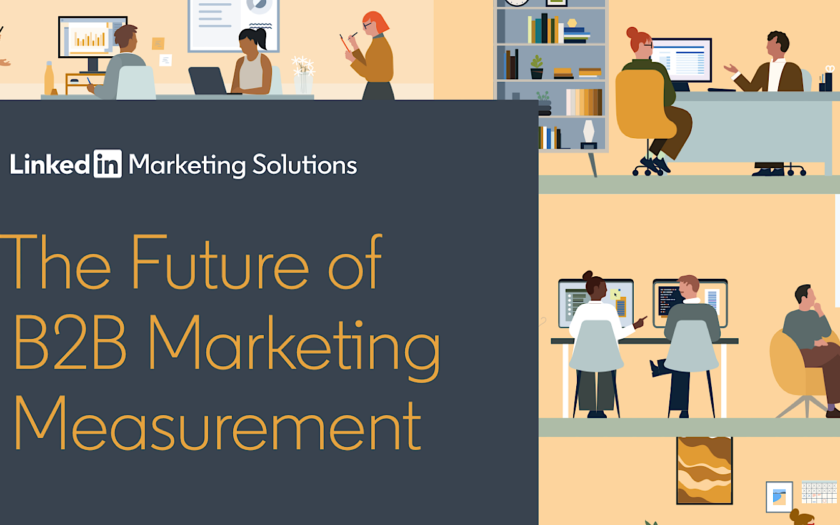[ad_1]
A new LinkedIn report shows how businesses are changing their approach to measuring marketing success.
The report, based on insights from leaders at Microsoft, ServiceNow, PwC, and other global firms, identifies five key trends reshaping measurement strategies.
1. Revenue-Centric Metrics
Marketers are now focusing more on revenue-related metrics instead of traditional cost-per-lead measures.
Leaders are adopting tools that sync CRM data with campaign engagement. These tools bridge the gap between marketing activity and business outcomes and show how specific efforts drive deals.
Other critical shifts include:
Marketing Qualified Leads (MQLs) are no longer the primary metric because their conversion rates are inconsistent.
There is a greater emphasis on “sourced pipeline,” which refers to deals generated by marketing, and “influenced pipeline,” which measures the effect of multiple touchpoints in marketing.
ServiceNow’s Vivek Khandelwal noted:
“You can talk about click-through rate, cost per click, and cost per impression all day long, but what eventually matters to the business are the revenue metrics. It’s all about how many customers we’re winning, how many opportunities we’re creating, and the ROI we’re generating on marketing investments.”
Personio’s Alex Venus emphasized:
“Our North Star metric is qualified pipeline, which means an opportunity that your salespeople care about, which should be converting at a rate of 25% or more.”
2. ROI Frameworks for Brand Marketing
CFOs now need proof that brand-building works financially. This means marketers must show how their awareness efforts lead to sales results.
The report reads:
“The emphasis is shifting from the cost of marketing outcomes to the value of those outcomes. For marketers, that means reporting on KPIs that correlate with revenue in a clear and consistent way – at a rate that both sales and finance can believe in.”
To justify brand spend, teams are:
Separating brand and demand budgets to optimize spending.
Running campaigns focused on specific high-value accounts, then tracking deal timelines for correlation.
Balancing engagement (e.g., branded search growth) with pipeline influence.
3. AI-Powered Attribution Models
B2B buying groups are getting larger, often including 6 to 10 members.
As a result, marketers are now using machine learning models instead of outdated last-touch attribution methods.
Julien Harazi, Head of Lead Generation at Cegid, stated in the report:
“As B2B marketers, our world has become a lot more complicated. All of the touchpoints are intertwined and it can be difficult to understand the buyer journey and identify where the value comes from in terms of your marketing.”
Emerging solutions include:
Lifetime value (LTV) analysis by channel/segment
Media Mix Modelling to assess cross-channel synergies
Integration with LinkedIn Sales Navigator for account-level journey mapping
4. Multi-Timeframe Measurements
Leaders now measure performance across three timelines to balance immediate optimizations with long-term growth:
Real-time: Cost-per-qualified lead optimizations
Mid-term: 3–12-week pipeline ROAS
Long-term: LTV-adjusted ROI incorporating brand investments
This approach helps teams avoid over-indexing on short-term gains while undervaluing brand-building.
Sveta Freidman, Global Data & Analytics Lead at Xero, states in the report:
“One of my goals is to build an understanding of lifetime value by channel, segment level and by platform so that we can optimize our approach around the best outcomes for our business.”
5. Unified Real-Time Dashboards
With 73% of marketers citing siloed data as a top challenge, integrated analytics tools are becoming critical.
Solutions gaining momentum include:
LinkedIn Insight Tag for cross-website behavioral tracking
Hybrid metrics balancing brand engagement and demand signals
Predictive AI models identifying untracked revenue influences
What This Means For Marketers
The report highlights the value of measurement for brand growth.
These three priorities stand out for B2B marketers:
Link metrics to revenue.
Use tools like multi-touch attribution and brand lift studies to assess demand and brand impact.
Balance real-time optimizations with long-term customer value analysis.
Success in B2B marketing depends on your ability to translate data into language that resonates with CFOs and business leaders.
Download the full report for more details.
[ad_2]
